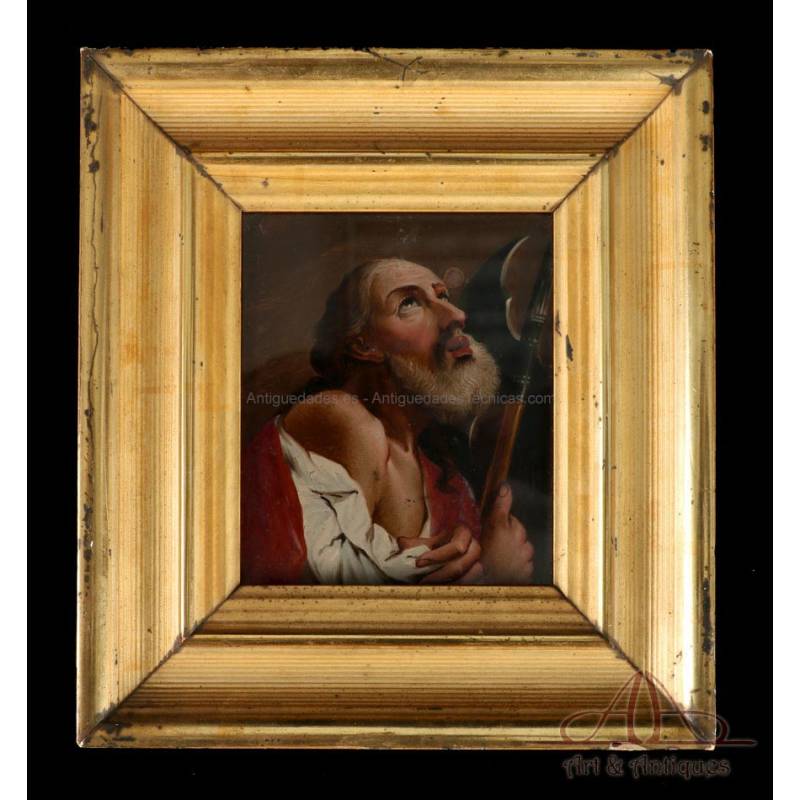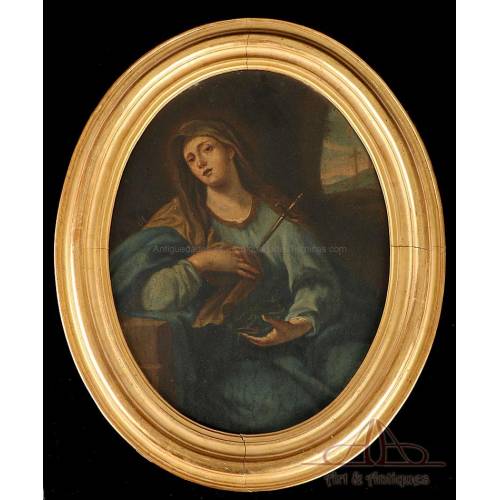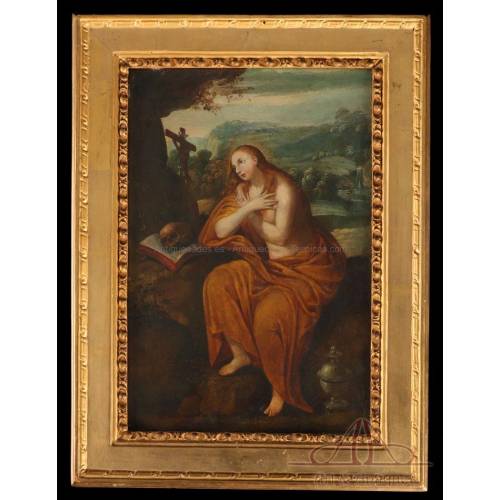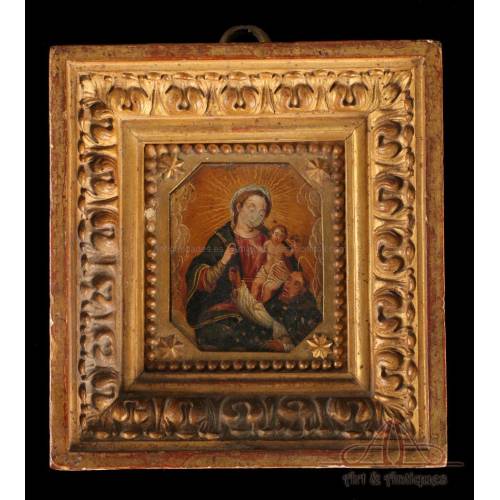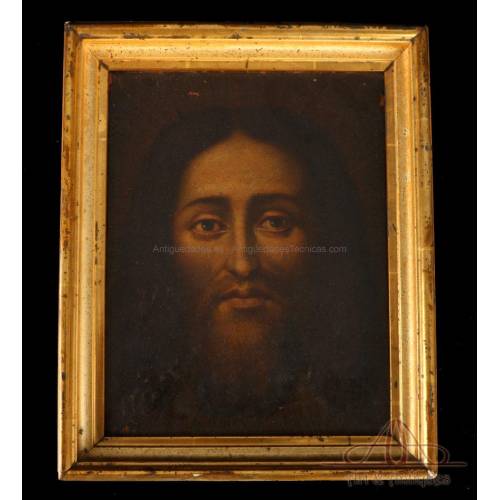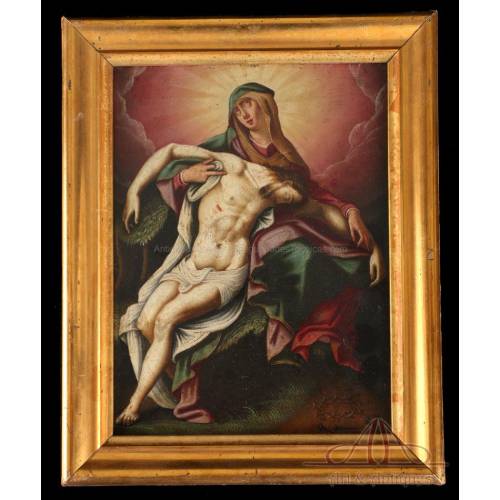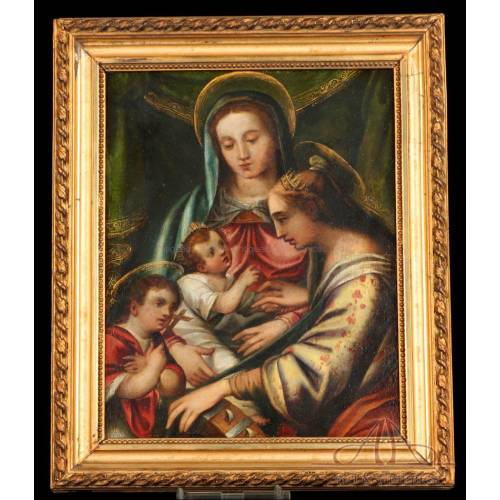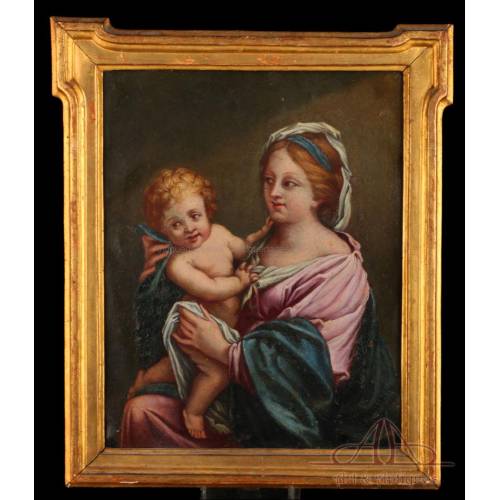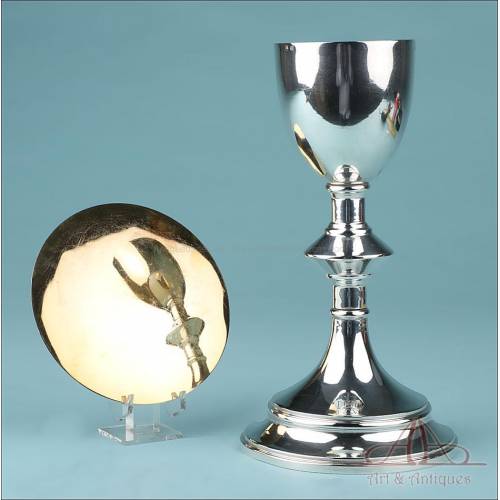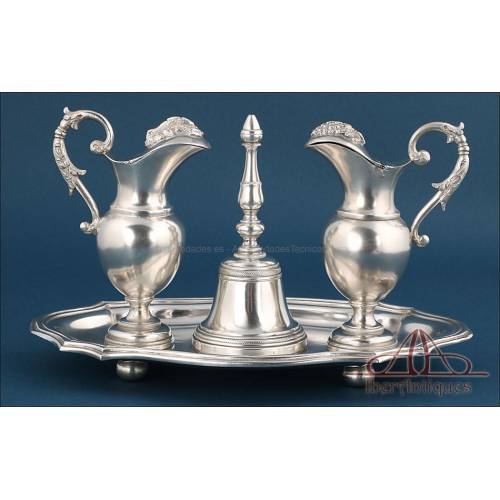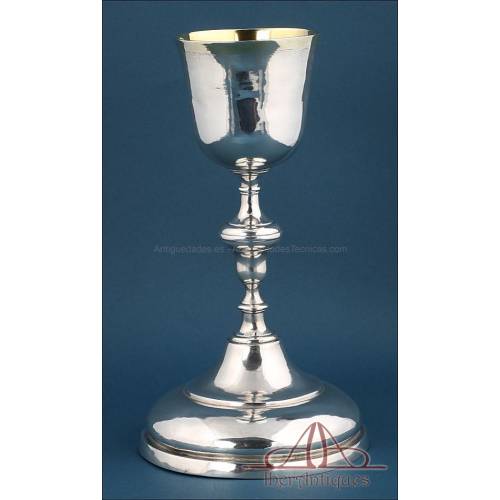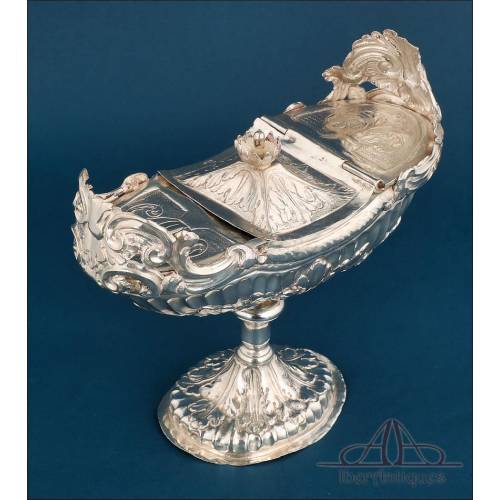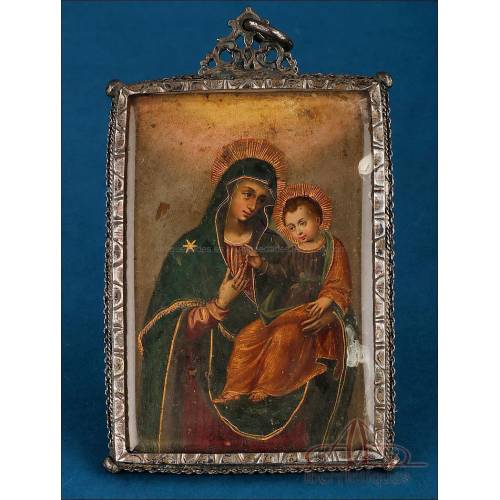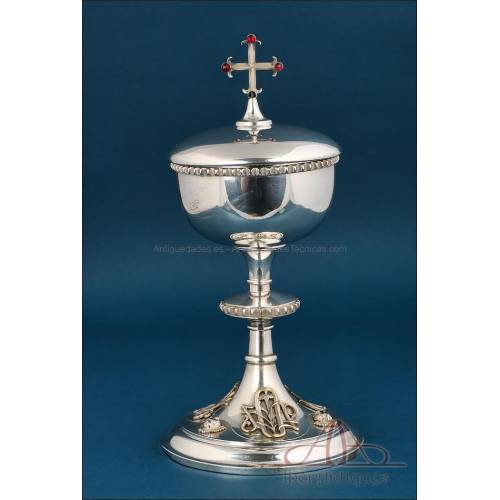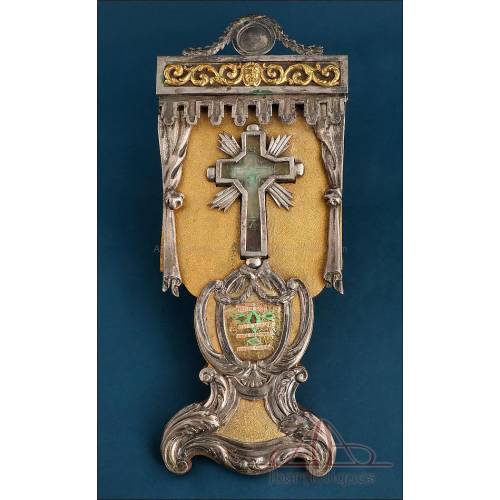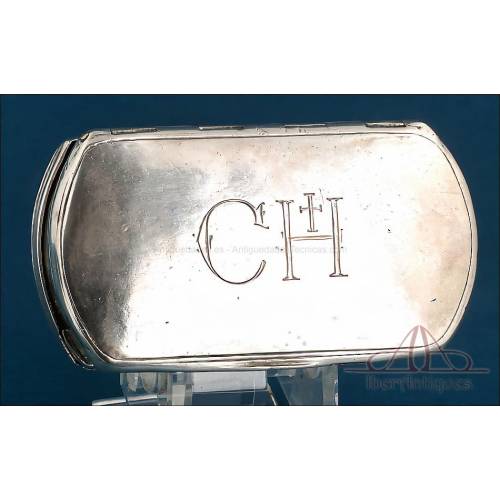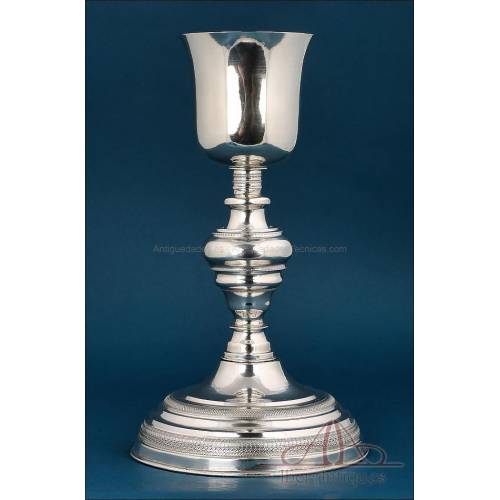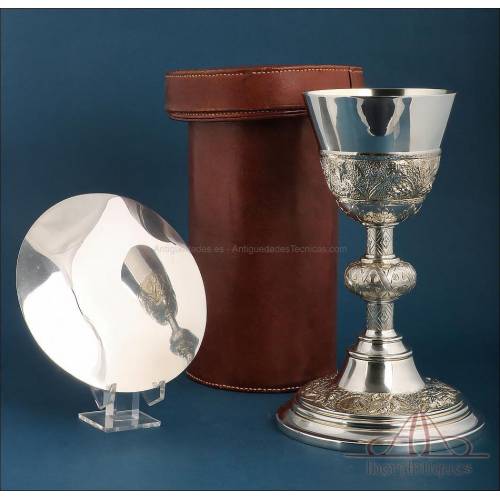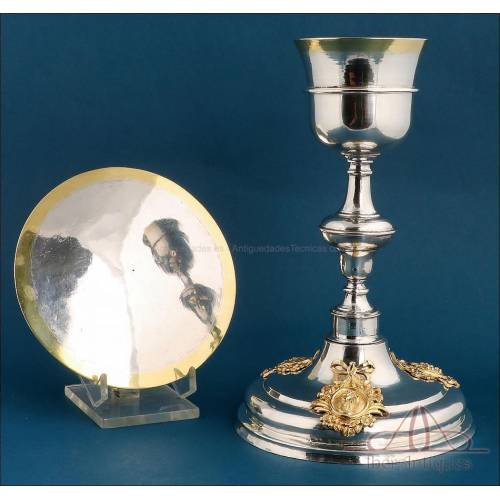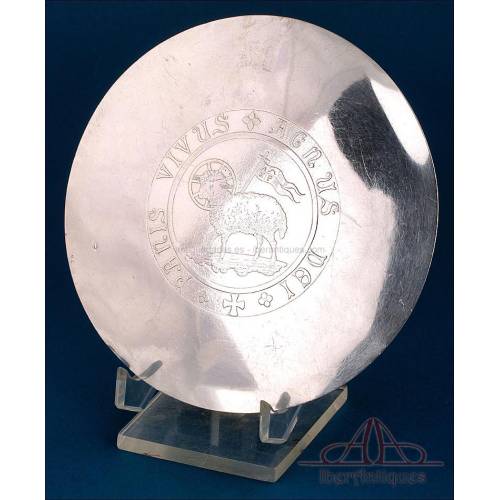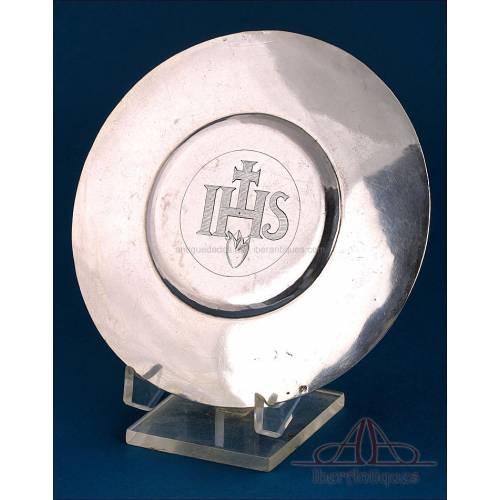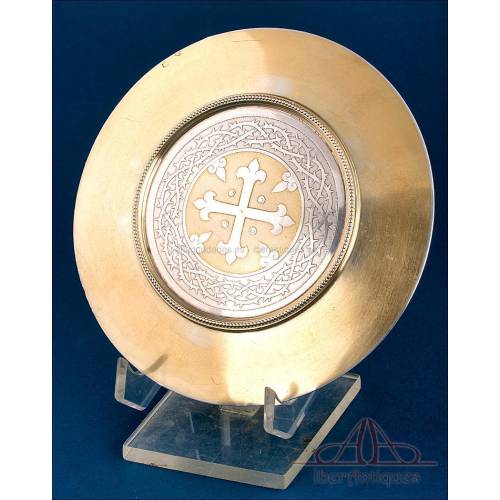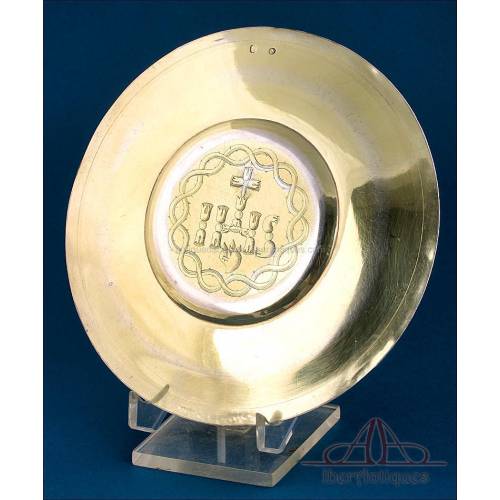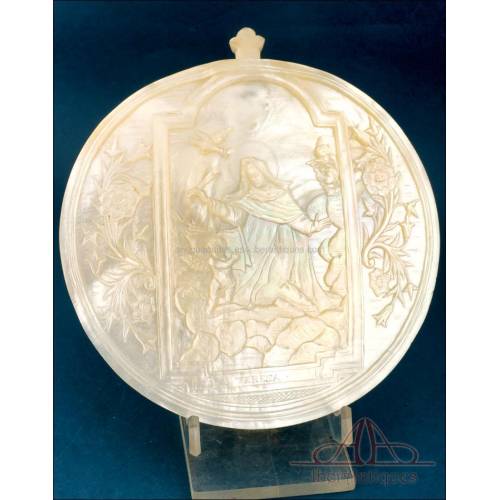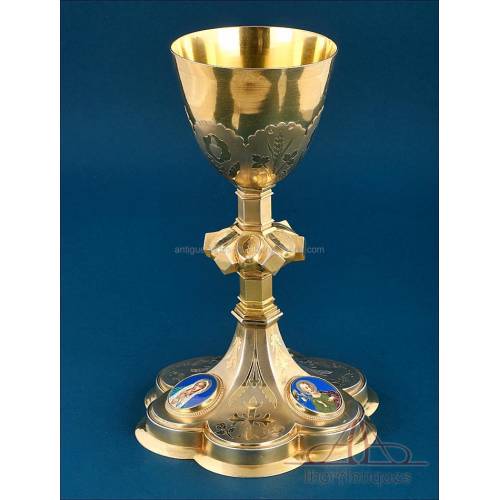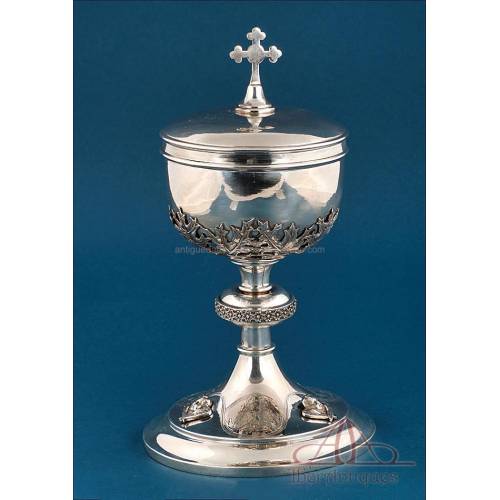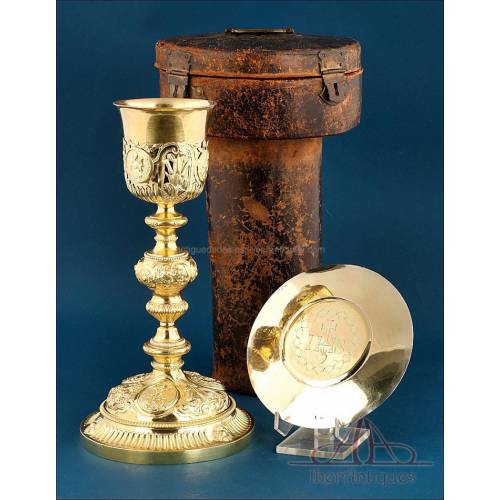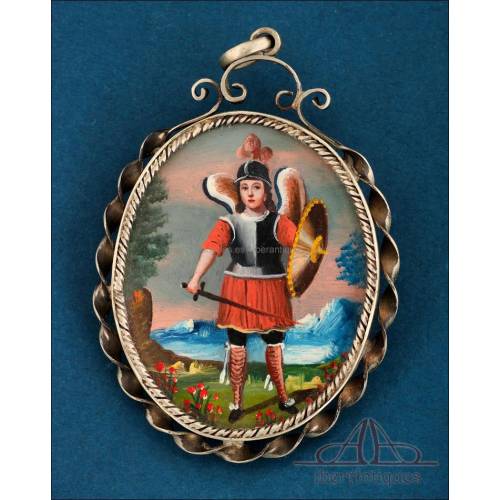D-779
Antique Italian Vitela Painting on glass of Saint Simon the Zealot ca. 1800
Antique Italian devotional painting ca. 1800, oil on glass representing Saint Simon the Zealot in ecstasy, original gilt frame, rare sacred artwork.
Antique Italian Devotional Painting on Glass of Saint Simon the Zealot ca. 1800
This exquisite devotional painting, executed in oil on fine glass at the end of the eighteenth century or the beginning of the nineteenth, represents Saint Simon the Zealot in an attitude of spiritual ecstasy. Stylistically, the work belongs to the late Baroque period transitioning into early Neoclassicism, a moment when dramatic emotion was refined into a more contained expression, focused on formal purity and compositional clarity.
The tradition of painting on vellum for devotional purposes had a significant presence in northern Italy between the late seventeenth and early nineteenth centuries. Vellum, made from finely treated animal skins, provided an extremely smooth surface that allowed for great precision of detail and a rich tonal range, ideal for intimate and spiritual representations. Bologna, celebrated for its academy that promoted chiaroscuro ideals and controlled emotion, and Genoa, with its preference for luminous and intimate sacred art, were principal centers where small format devotional works were produced, often intended for domestic oratories or private collections.
The technique employed in this work, oil applied on vellum mounted on cardboard, is characteristic of small format productions intended for private devotion. The meticulous brushstroke and light glazes, combined with a masterful use of chiaroscuro, create an image of great emotional intensity. The mature face, graying beard, subtly modeled musculature, and the upward gaze towards heaven convey profound spirituality without the need for excessive narrative.
The use of vellum also gave the painting a precious aura, and it was common for these pieces to be mounted in simple yet elegant gilded frames, suitable for private prayer spaces. These works, due to their inherent fragility, are today extraordinarily rare and highly valued by collectors and specialized museums.
Iconographically, the figure holds a double-bladed axe, an element that identifies him as Saint Simon the Zealot, distinguishing him from other apostolic saints. The representation of Saint Simon the Zealot, less common than that of other apostles, adds a particular iconographic interest to this piece. His identification through the double-bladed axe fully aligns with hagiographic tradition, further reinforcing the historical value of the work.
The dark background, typical of Baroque drama, highlights the figure of the saint and gives the scene a theatrical atmosphere of solemnity and mystery. Considering its technical and stylistic characteristics, and the refined use of vellum, it is reasonable to place the origin of the piece in northern Italy. Cities like Bologna and Genoa were active centers of small format devotional painting production during this period.
The water gilded wooden frame, with simple lines and fluted moldings, displays an authentic antique patina. The small losses of gilding, craquelure, and visible wear do not affect its structural solidity, on the contrary, they testify to the noble antiquity of the piece.
Regarding dating, the treatment of the figure, the painting technique, the choice of support, and the frame style all point to a probable execution period between circa 1770 and 1820. This chronological range corresponds to a time when northern Italy still combined the Baroque heritage with the emerging Neoclassical tendencies, especially in sacred art production.
For its artistic quality, its technical uniqueness, its rare iconography, and its excellent state of preservation, this painting constitutes a unique opportunity for sacred art collectors, historians of devotional painting, and lovers of works that, like this one, offer pure beauty, history, and spirituality. Furthermore, thanks to its contained expressiveness and elegant presence, it will enrich the decoration of any home in an incomparable way, providing a sense of emotional and historical depth.
A true jewel of artistic refinement and spiritual sensitivity, difficult to find in today's market.
Dimensions: 21.5 x 19.5 cm (8.46 x 7.68 in)
Image: 11.5 x 9.5 cm (4.53 x 3.74 in)

